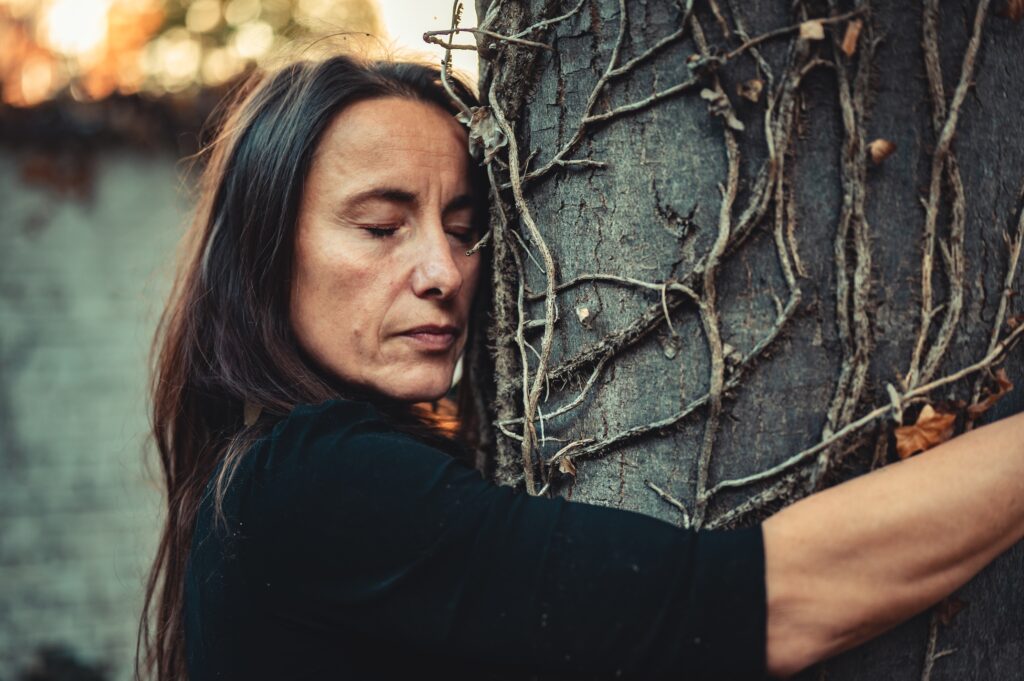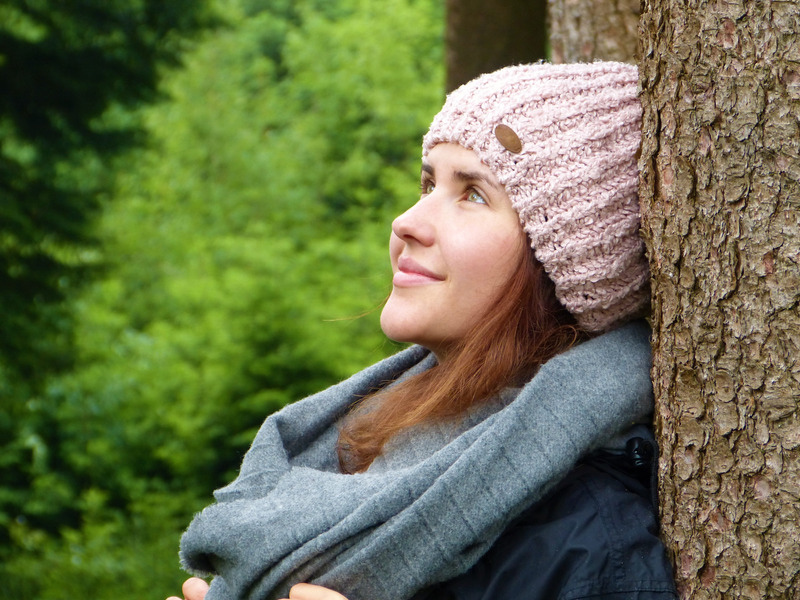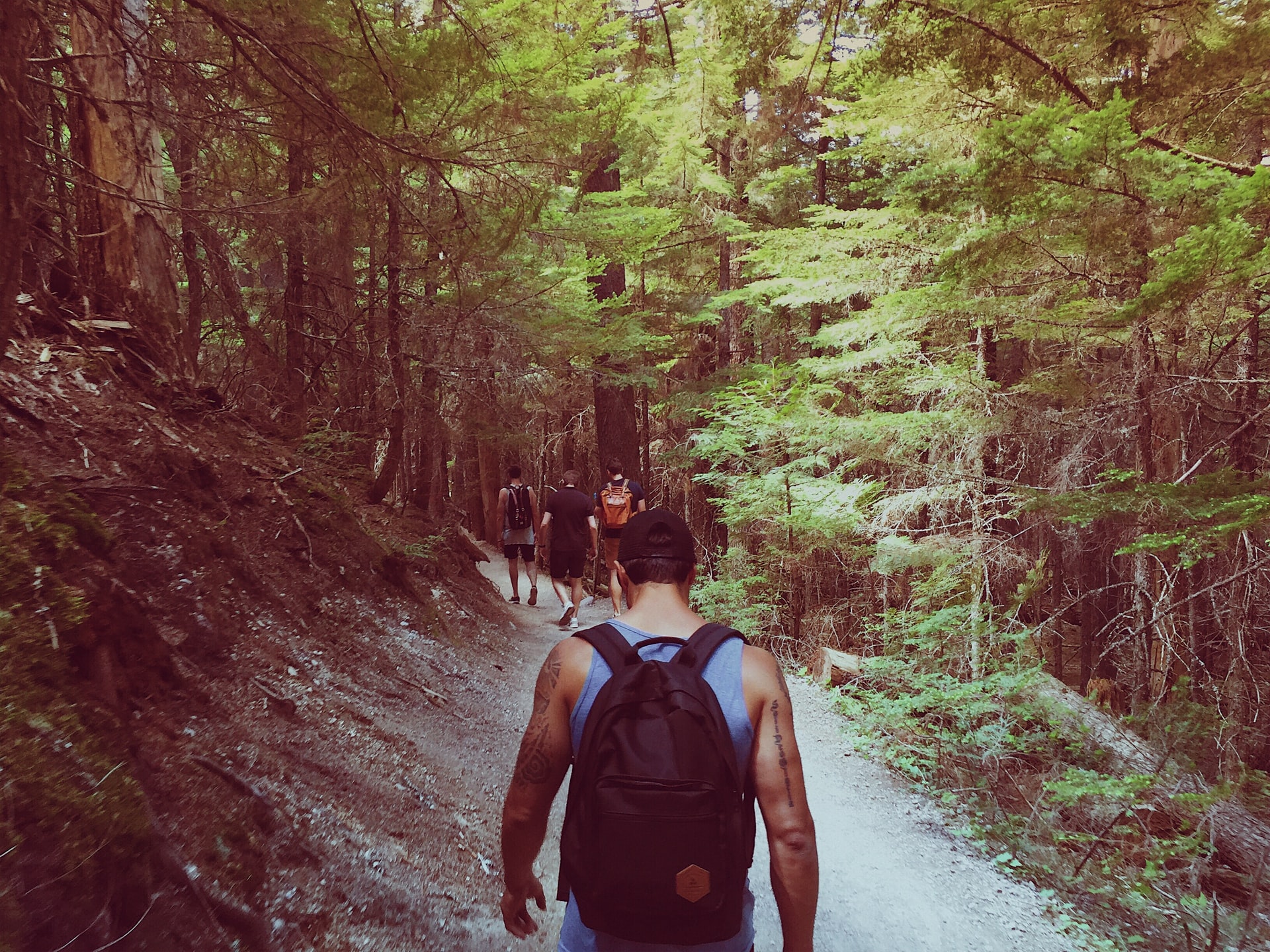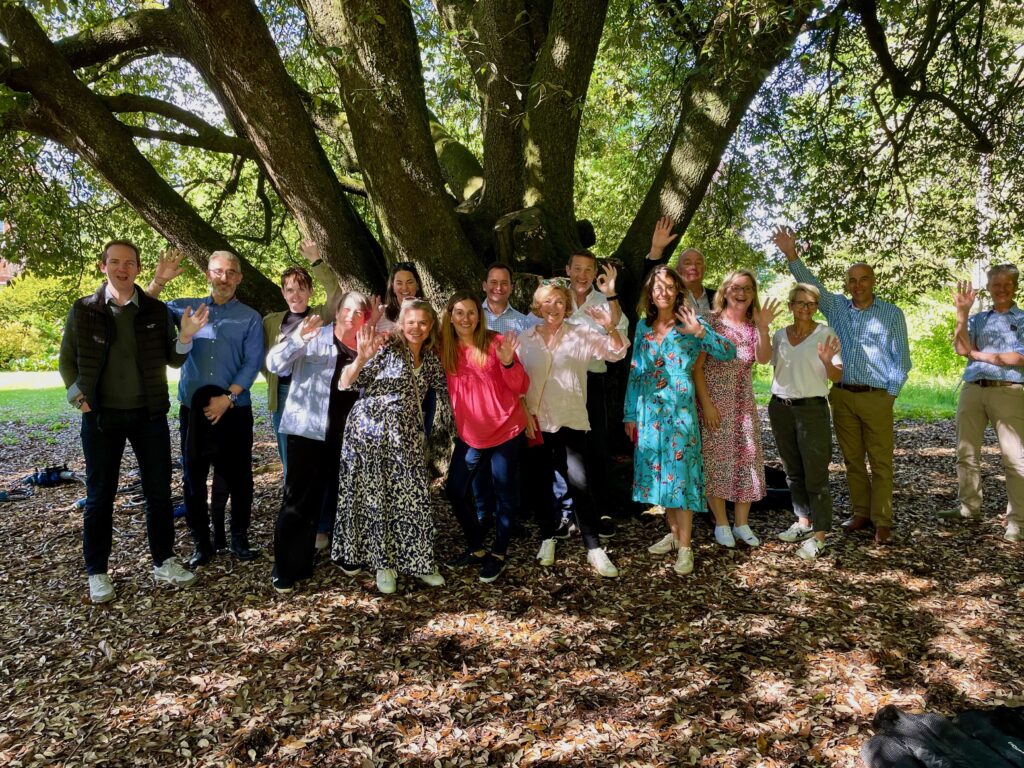Find out everything you ever wanted to know about Forest Bathing
When you hear the term “Forest Bathing” – what do you think of? Perhaps, a rather nippy dip in a murky stream springs to mind? That doesn’t sound very inviting, does it?!
But fret not. One of the main principles of Forest Bathing is the orientation to pleasure. Let me tell you all about its origins, its benefits and what it involves.
Understanding what Forest Bathing really is
Forest Bathing, also known as Forest Therapy, comes from the Japanese term: Shinrin-Yoku (森林 浴). This literally translates as ‘bathing your senses in the atmosphere of the forest’, which is why it’s often called Forest Bathing, but I promise you don’t need a shower cap. It is about focussing on the immersion of your senses in the natural world. I often use the terms nature-based mindfulness or nature connection.
This transformative practice is where yoga was in the UK 30 years ago…. just beginning to ‘knock at the door’, but sadly far away from the mainstream. But, I am on a mission to change that and dismiss the myths and misconceptions about Forest Bathing that some people have.
Read the myths and misconceptions blog here.

Forest Bathing is an evidence-based, therapeutic practice that connects people to natural environments through gentle, sensory-based activities.
The practice takes ‘spending time in nature’ one step further and focuses on connecting with nature.
“The intent is to put people in touch with the present moment in a profoundly deep way”, says clinical psychologist Scott Bea. “The sights, sounds, smells and textures of the forest take us right into that moment, so our brains stop anticipating, recalling, ruminating and worrying”. That’s the healing power of nature.
What are the origins of Shinrin-Yoku?
The outdoor mindfulness technique of Forest Bathing, and the ‘style’ I use, originated in Japan in the 1980s, then it spread across Asia and is now becoming popular in the West.
However, its origins truly belong in far more ancient history. If you think back to our ancestral ways, we used to be at one with nature. Humans worked and lived together in unity with the land and our natural surroundings. So, is it any wonder that even now, all these centuries later and with all our mod cons, we still long to ‘get away from it all’? Be that camping in the middle of nowhere or climbing mountains to feel alone and free.

Forest Bathing is simply a way of going back to what we know, but have forgotten.
Shinrin-Yoku also finds its roots in religion. Shintoism, the indigenous faith of the Japanese people, holds nature sacred. The people believe that if we humans respect nature, nature will respect us. Mountains peaks, deep valleys, and the wide ocean are viewed as dwellings for the divine, and other natural objects, such as evergreen trees are considered to be symbols of divine spirits. Shinto translates directly into “Way of Kami” (Gods). The most important Kami in Shinto is Amaterasu, the sun goddess, and Susanoo (what a brilliant name!), the wind god.
Shinrin-Yoku and Japan
In the 1980s, the Japanese government recognised that the country was gripped by a stress epidemic. The working class, in particular, were quite literally working themselves to death. In response, the Japanese Ministry of Agriculture, Forestry and Fisheries dedicated certain forests as Forest Therapy Bases and began prescribing ‘green prescriptions’.
The scientific data collected by these Forest Therapy Bases of their benefits were compelling, and it led to the creation of over 60 bases dedicated to the practice, with plans to reach 100.
The Japanese have now entirely integrated Shinrin-Yoku with national healthcare. It’s accepted as preventative medicine to reduce stress and slow chronic illness.
The Forest Therapy Bases even partner with large organisations, such as Nissan and Mazda Motor Corporation, police unions, schools and music groups.

Why go Forest Bathing?
Forest Bathing has undoubtedly changed my life. I no longer carry the heavy burden of inexplicable loneliness deep within my soul, because I know I belong to this natural world (just as my ancestors did). And my anxiety is never, ever debilitating.
I often talk about the “benefits of Vitamin N” – the N stands for nature!
In Japan, the forests used as therapy bases are cultivated with Sugi and Hinoki cypresses, known for their sense-enticing aroma. These essential oils are known as phytoncides and they lower blood pressure, increase the production of NK cells and improve mood. NK cells are known to help protect us against cancer and viruses.
The trees emit these phytoncides to protect themselves from attack, so it makes sense that they’re so beneficial to us humans too, doesn’t it?
Here in the UK, it’s mainly conifers and oaks that emit the airborne antibacterial chemicals – so I try to choose woodlands where there are many of these, although spending time with any type of tree and immersing yourself in nature has numerous psychological benefits, as well as physiological benefits too.
Read about the benefits of Forest Bathing and Nature Connection here.

Where can I do Forest Therapy?
Forest Bathing doesn’t have to happen in the deep wilderness; the Japanese deliberately designed the practice to take place at the edges of the forest, the ‘satoyama’ as they call it. The intention is for people to begin seeing the human world as part of nature, rather than something completely separate. They also wanted to make the practice accessible to all, so deliberately avoided the need to take a long hike.
I often do a form of Forest Bathing in my own garden. The types of nature-inspired activities I do when I’m on the school run or in my garden are commonly referred to as Nature Connection practices. They don’t need big trees and can include activities like cloud watching, mindful photography, studying leaves or simply noticing movement.
I also sell a beautiful boxed set of Forest Bathing cards. The box contains an introduction to the practice of Forest Bathing and 10 different Nature Connection activities that you can do alone in your garden, local woodland or park. They make a thoughtful gift to the nature-lover in your life.
Check out the locations I work in here, which include Hillier’s Gardens in Romsey, Exbury Gardens in the New Forest, Southampton, Winchester and Basingstoke.
What happens during a Forest Bathing Session?
Have a look at this 2-minute video which explains a typical Forest Bathing session that focuses on Nature Connection practices.
Read about what happens in a typical Forest Bathing session for friends or general public here
Want to learn more about Forest Bathing and Nature Connection?
Sign up to the mailing list to get priority access to events and keep up with all the latest news, science, tips to try at home and special offers.
Explore my website to learn more about what I offer, including online and self-paced mindfulness-in-nature courses, regular Forest Bathing sessions across Hampshire and Berkshire, as well as online and in-person corporate events with the wow factor.
If you are looking for a private booking for a big birthday or hen-do, I can say from experience they work really well too.
Please get in touch if you have any questions. I hope to welcome you to your first ‘Wild Wellbeing’ experience soon.
With nature’s blessings,
Sonya

Pingback: Forest Bathing and Cancer in Health Triangle Magazine - Adore Your Outdoors
Pingback: Forest Bathing to Boost Team Engagement - Adore Your Outdoors
Pingback: 5 Simple Steps to Practise Forest Bathing Alone - Adore Your Outdoors
Pingback: Great Mental Health: The Most Common Obstacles that Get in the Way - Adore Your Outdoors